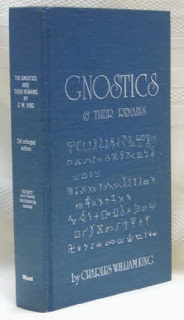"In the mid-19th century, eighty years before the chance discovery of a treasure trove of Gnostic manuscripts in a dump in Egypt, C.W. King collected what was known about the Gnostics in this book. At that time there were only three sources of information on Gnosticism: polemics against them by early Christian writers, the Pistis Sophia, and a jumble of confusing images and cryptic inscriptions on Roman-era gems and amulets.
In spite of all of the missing jigsaw pieces, King managed to assemble a picture of the Gnostics which is still cited today as authoritative. Rather than one monolithic group, the Gnostics had very diverse beliefs. Some thought that Jesus was a man, while others thought that he was a God, and some believed that he became a God only after he was baptized. Some believed in a struggle between good and evil, others were non-dualistic. Most had widely-varying intricate systems of intermediaries between the ultimate deity and humanity. On the face of it, this looks polytheistic, but instead was an attempt to solve the problem of how a perfect God could create an imperfect world. Many of these Aeons later became the demons and angels of Medieval and Renaissance magic.
King seeks links to Gnostic symbols and beliefs far afield, from India, to the Templars, Rosicrucians and Illuminati. He discusses Mithra and Serapis worship, and gives many examples of Roman and Greek magical spells and talismans. He discusses the fudged birthdate of Jesus, Masons' marks, and Simon Magus. The book is a fascinating tour of hidden knowledge."




















0 comments:
Post a Comment